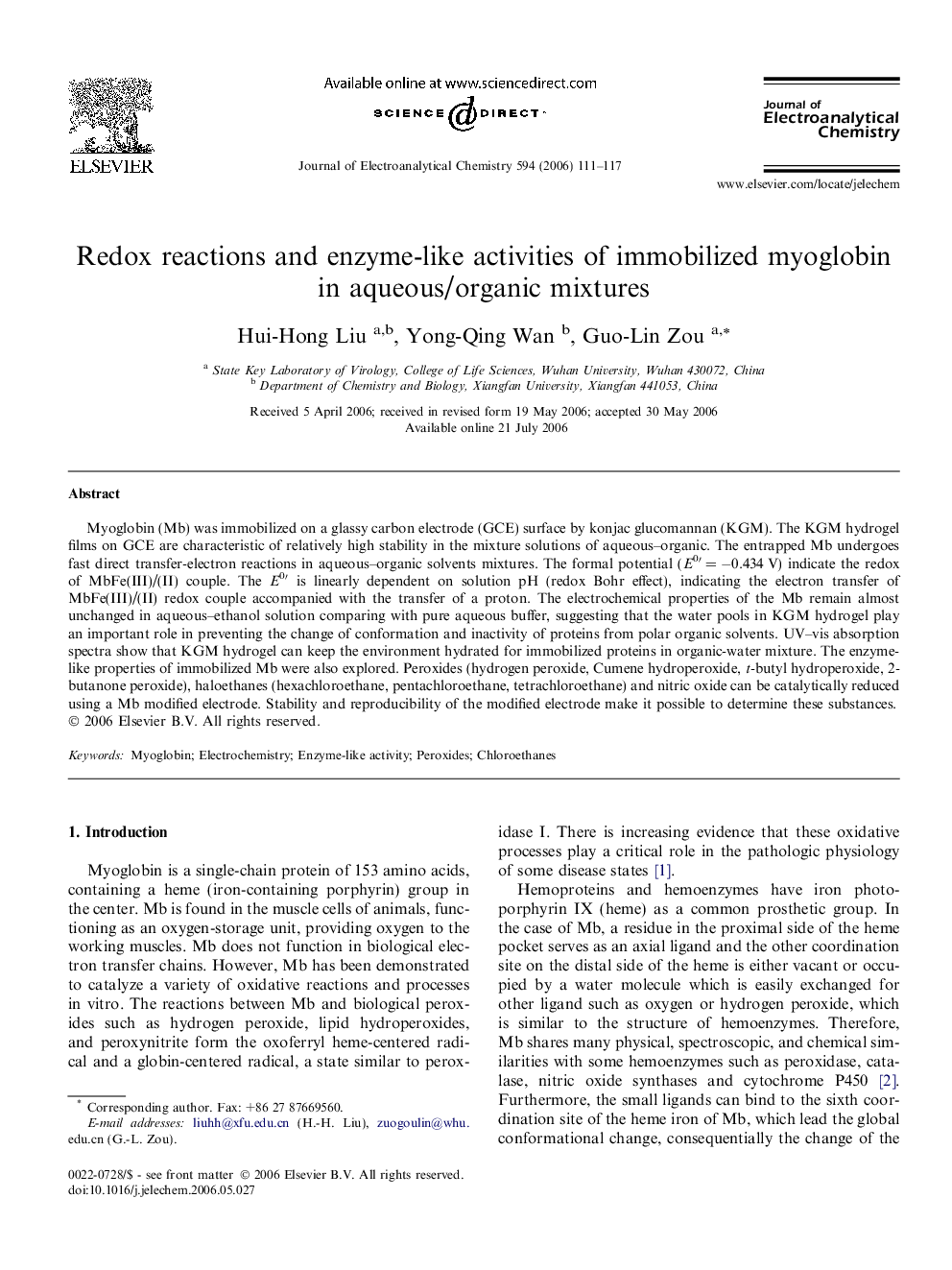| Article ID | Journal | Published Year | Pages | File Type |
|---|---|---|---|---|
| 221128 | Journal of Electroanalytical Chemistry | 2006 | 7 Pages |
Myoglobin (Mb) was immobilized on a glassy carbon electrode (GCE) surface by konjac glucomannan (KGM). The KGM hydrogel films on GCE are characteristic of relatively high stability in the mixture solutions of aqueous–organic. The entrapped Mb undergoes fast direct transfer-electron reactions in aqueous–organic solvents mixtures. The formal potential (E0′ = −0.434 V) indicate the redox of MbFe(III)/(II) couple. The E0′ is linearly dependent on solution pH (redox Bohr effect), indicating the electron transfer of MbFe(III)/(II) redox couple accompanied with the transfer of a proton. The electrochemical properties of the Mb remain almost unchanged in aqueous–ethanol solution comparing with pure aqueous buffer, suggesting that the water pools in KGM hydrogel play an important role in preventing the change of conformation and inactivity of proteins from polar organic solvents. UV–vis absorption spectra show that KGM hydrogel can keep the environment hydrated for immobilized proteins in organic-water mixture. The enzyme-like properties of immobilized Mb were also explored. Peroxides (hydrogen peroxide, Cumene hydroperoxide, t-butyl hydroperoxide, 2-butanone peroxide), haloethanes (hexachloroethane, pentachloroethane, tetrachloroethane) and nitric oxide can be catalytically reduced using a Mb modified electrode. Stability and reproducibility of the modified electrode make it possible to determine these substances.
